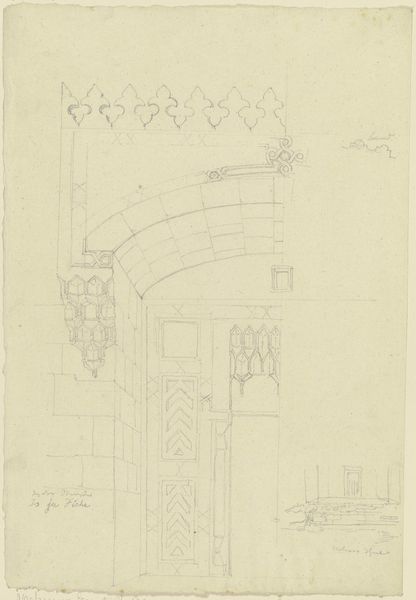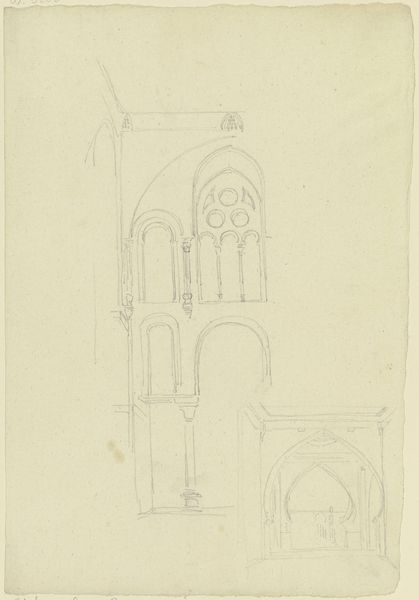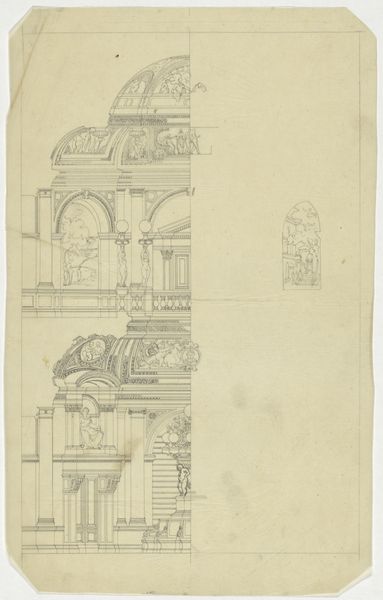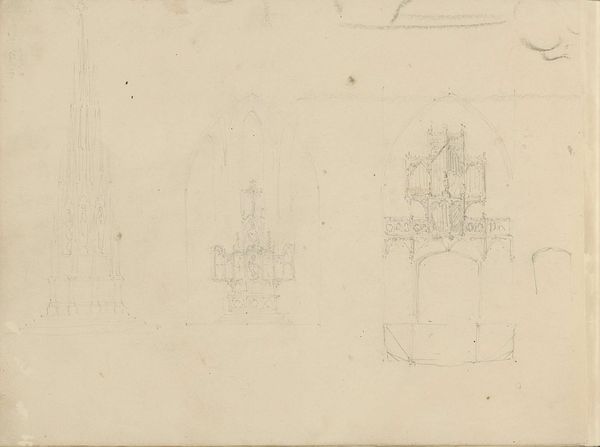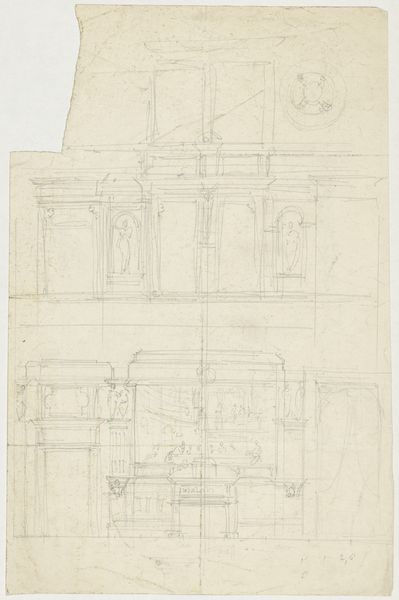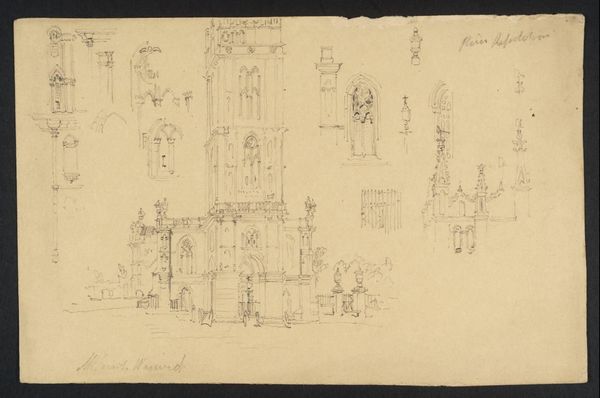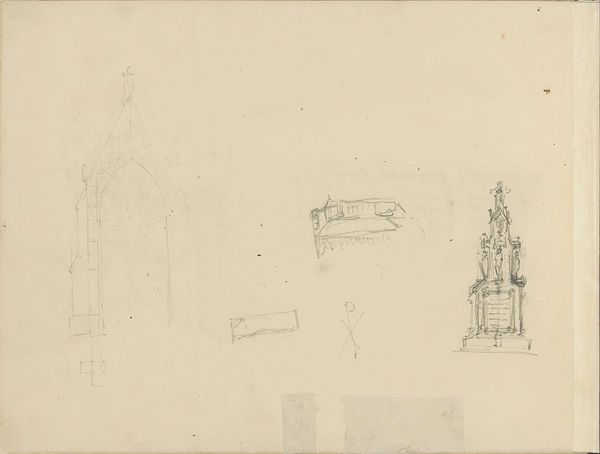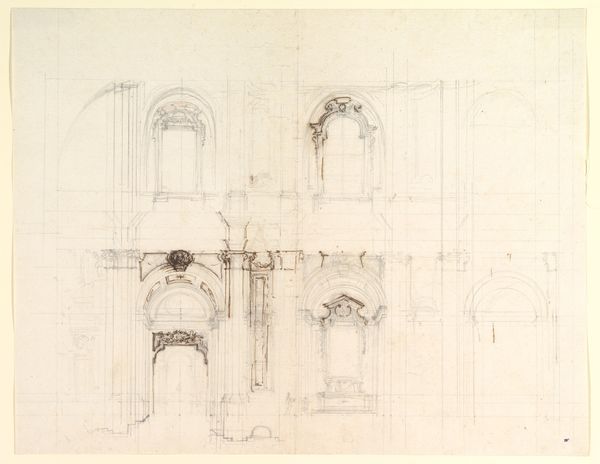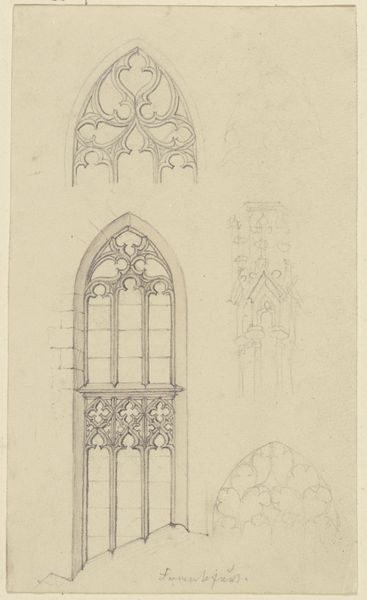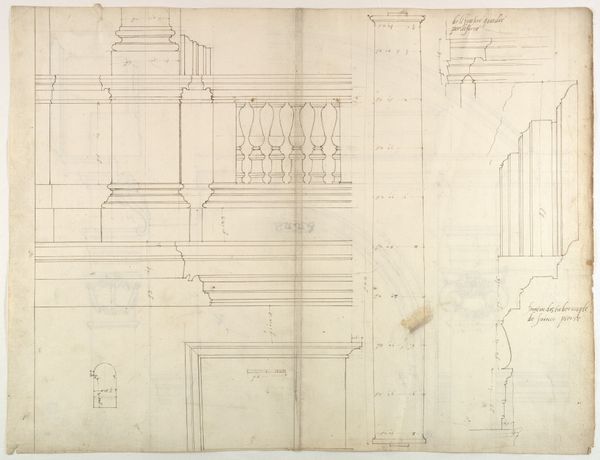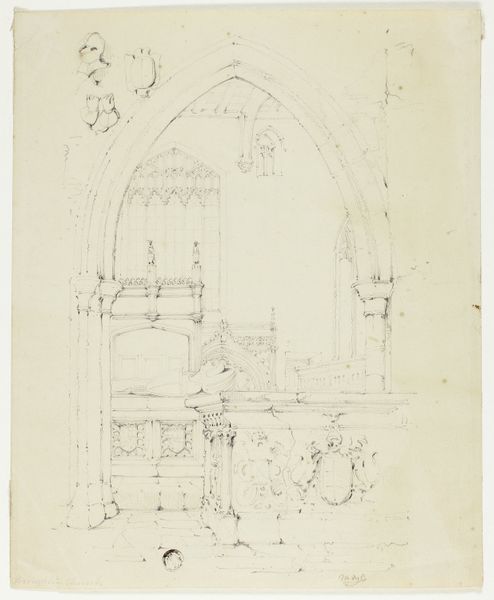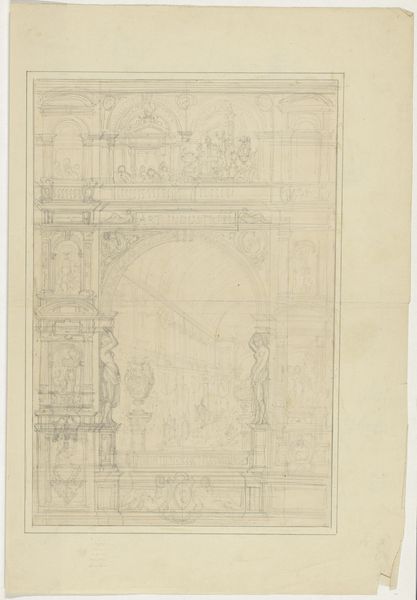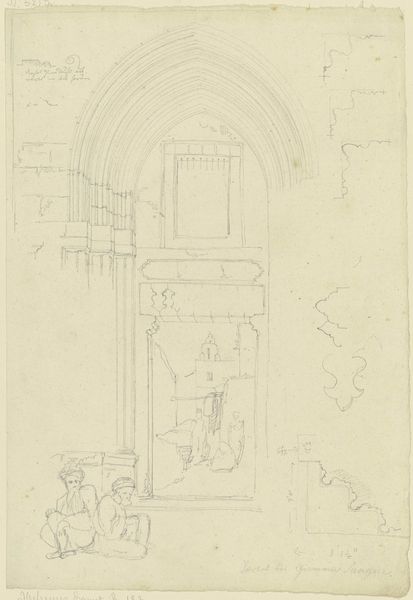
Studienblatt_ Grundriss, Wandaufriss, Architekturprofile und -details 1829
0:00
0:00
drawing, pencil, architecture
#
drawing
#
neoclassicism
#
pencil
#
architecture
Copyright: Public Domain
Curator: There’s something so intimate about this pencil drawing. It feels like we’re looking at a secret, a glimpse into an architect's mind at work. Editor: Absolutely. What we have here is Friedrich Maximilian Hessemer’s “Studienblatt: Grundriss, Wandaufriss, Architekturprofile und -details," created around 1829. It resides in the Städel Museum. It’s more than just architectural drafting; it is an investigation into power, space and visuality. Curator: The neoclassical style is evident, right? It evokes those ancient temples and a sense of… order. The light pencil strokes lend a real vulnerability too, as if we're party to his hesitant considerations. The details of those capitals, the subtle curvature of the arches. He’s got the monumentality of Rome mingling with, like, almost shy exploration of form. Editor: Precisely! Hessemer, a 19th-century artist, positioned himself amidst the shift toward neoclassicism in architecture and design. However, we need to interrogate what “order” truly signified within that context. The quest for pure, rational forms often mirrored a desire for social control and imperial dominance. Look at the arches, how they mimic religious iconography. It brings up questions about the conflation of religious power and architectural power. Curator: Okay, I’m following, and yet… when I see this, I get none of that, hah! I am lost in these meticulously rendered profiles, the quietude of a lone artist wrestling with structure and possibility. It's calming, meditative almost, in a weird way. Editor: The beauty of art lies in these layered interpretations. While I see potential for an architectural tool for oppression, your reading exposes a counter-narrative of intimate artistic expression. It serves as a prompt, questioning how even in seemingly objective drawings like architectural schematics, personal perspective and ideology become embedded. Curator: Well, either way, it’s clearly beautiful and thought-provoking, huh? So much intention conveyed via such minimal tools, which is no small thing. Editor: Absolutely. And recognizing that the quiet lines of a seemingly straightforward architectural study hold profound societal implications can, and I think, does amplify our understanding. It encourages engagement in how ideology is woven into every aspect of design.
Comments
No comments
Be the first to comment and join the conversation on the ultimate creative platform.
